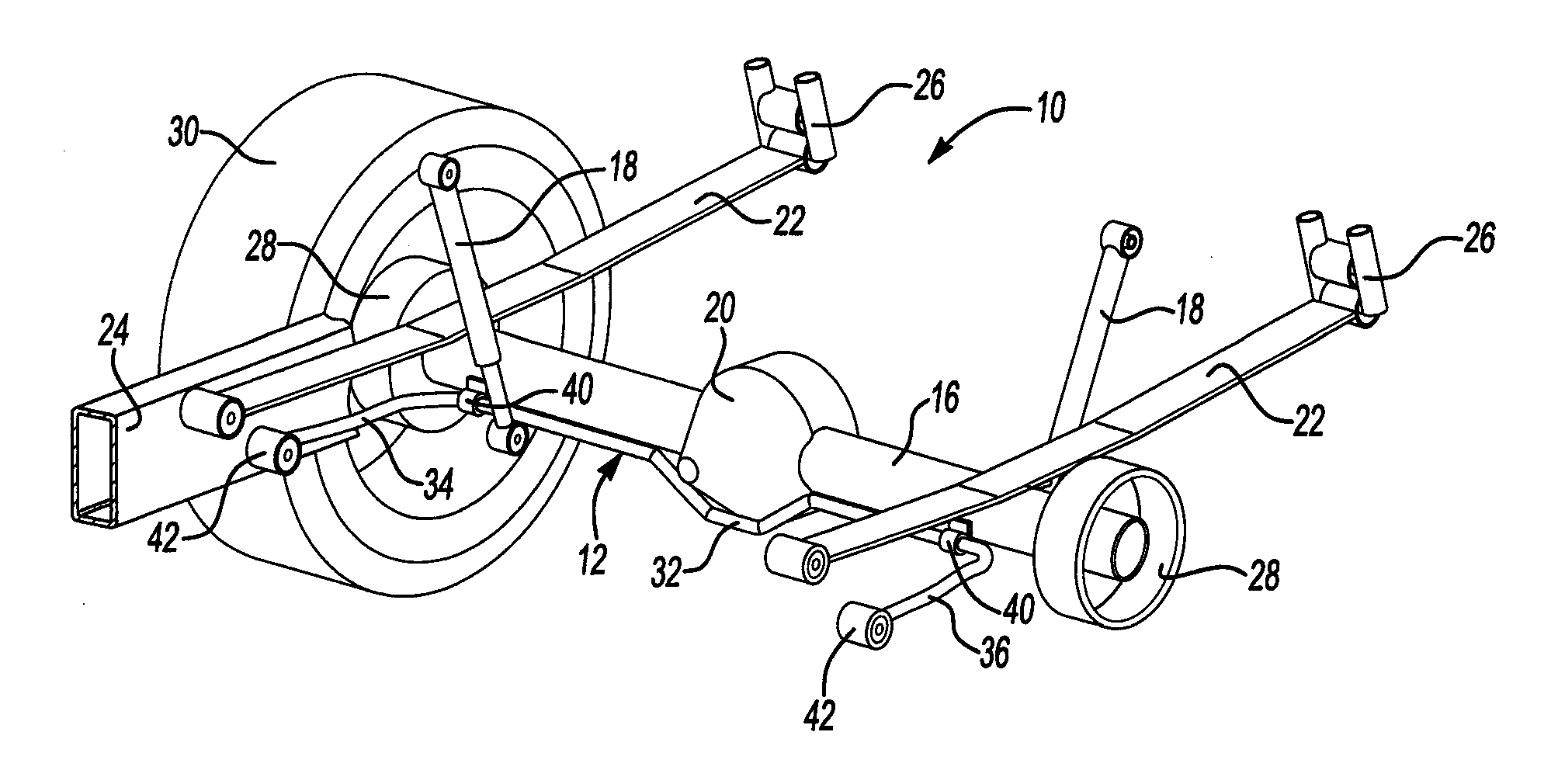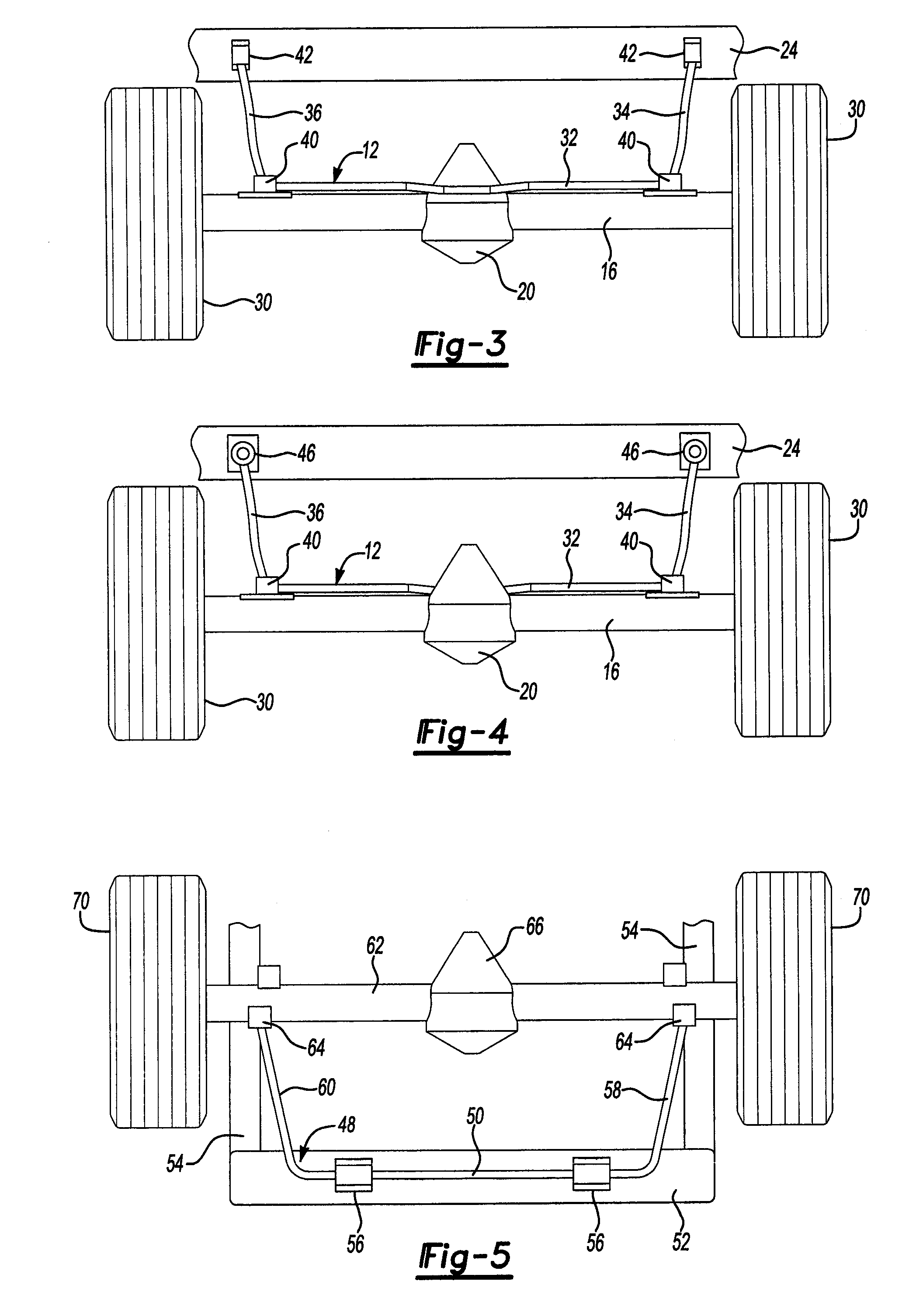Combined tramp rod and Anti-roll bar
a combination of tramp rod and anti-roll bar technology, applied in the direction of interconnection system, resilient suspension, vehicle spring, etc., can solve the problems of affecting the steering performance and/or vehicle stability, affecting the stability of the vehicle, and the centre section being subject to a combination of torsion and bending loads
- Summary
- Abstract
- Description
- Claims
- Application Information
AI Technical Summary
Benefits of technology
Problems solved by technology
Method used
Image
Examples
Embodiment Construction
[0028]Referring to FIG. 1, a rear suspension system generally indicated by reference numeral 10 is shown with the vehicle and several component parts not being illustrated to provide better visibility of the components of the suspension system 10 that are material to the illustrated combined tramp rod and anti-roll bar 12.
[0029]The tramp rod and anti-roll bar 12 is assembled to a rear axle beam 16. Dampers 18, or shock absorbers, are secured between the rear axle beam 16 and the body of the vehicle (not shown). A differential 20 is provided on the axle beam 16. Torque is delivered through a driveshaft (not shown) to the differential 20. Leaf springs 22 are provided on opposite sides of the rear suspension system 10. The rear axle beam 16 in FIG. 1 is shown in an overslung arrangement wherein the rear axle 16 is below the leaf springs 22. A frame rail 24 is partially shown in FIG. 1. It should be understood that the frame rail 24 is part of the vehicle chassis that is not otherwise s...
PUM
 Login to View More
Login to View More Abstract
Description
Claims
Application Information
 Login to View More
Login to View More - R&D
- Intellectual Property
- Life Sciences
- Materials
- Tech Scout
- Unparalleled Data Quality
- Higher Quality Content
- 60% Fewer Hallucinations
Browse by: Latest US Patents, China's latest patents, Technical Efficacy Thesaurus, Application Domain, Technology Topic, Popular Technical Reports.
© 2025 PatSnap. All rights reserved.Legal|Privacy policy|Modern Slavery Act Transparency Statement|Sitemap|About US| Contact US: help@patsnap.com



